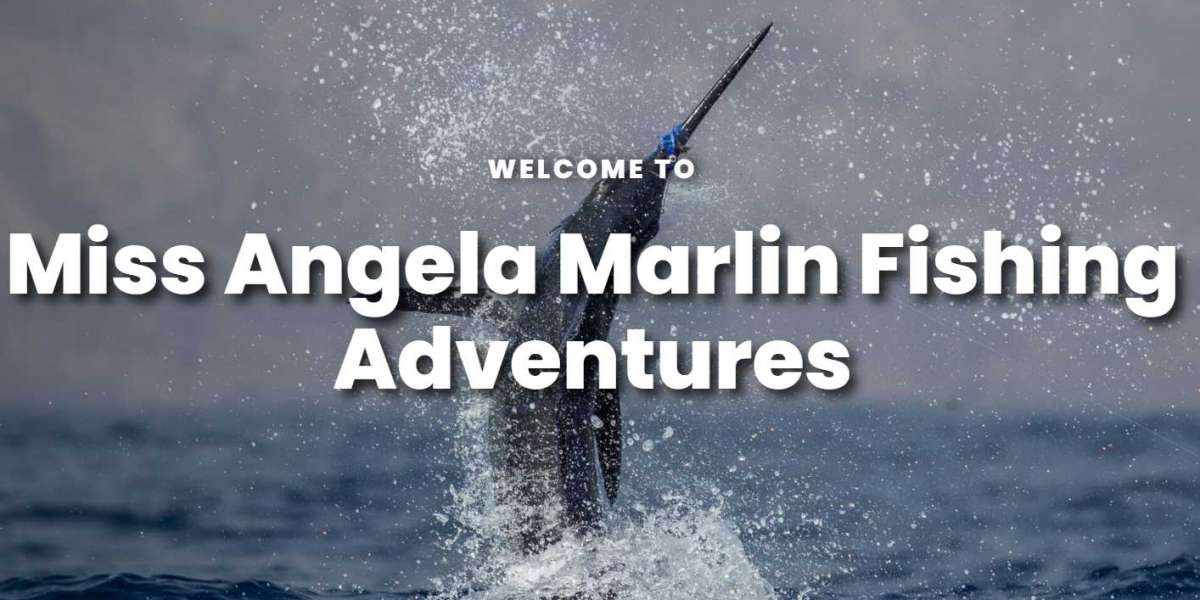1. The Marlin Fishing Season: When to Go
Cape Verde's marlin fishing season spans much of the year, but the peak months tend to fall between November and April. During this period, the islands experience favorable ocean conditions and water temperatures that attract marlin and other big game fish, such as sailfish, tuna, and dorado. The timing of your trip, however, can have a significant impact on your chances of catching a marlin, as marlin are migratory creatures, and their behavior is influenced by various environmental factors, including water temperature, currents, and bait availability.
Best Months for Marlin Fishing: November to April
November to December: Early in the season, blue marlin, the most sought-after species, are generally more abundant. The waters are cooler during these months, and fish tend to be more concentrated, especially off the islands of Sal, Boa Vista, and Santiago. During this time, you can also expect less competition, as fewer tourists visit Cape Verde before the peak of the winter season.
January to March: This is the peak period for marlin fishing in Cape Verde. The water temperature during these months is optimal for marlin, ranging between 22°C and 27°C, which is perfect for attracting both blue marlin and white marlin. During these months, many professional anglers flock to Cape Verde to compete in prestigious fishing tournaments. The fish are plentiful, and the chances of encountering larger specimens are high.
April: As the season winds down, the fishing remains excellent, though the waters may start to warm, and marlin can begin migrating away. Nonetheless, April still offers strong chances for anglers looking to catch blue or white marlin, particularly for those seeking a quieter, more relaxed fishing experience.
Off-Peak Months: May to October
While marlin fishing can still be good year-round, the summer months from May to October are considered the off-peak season for Cape Verde’s marlin fishing. During this period, the water temperatures rise, and marlin tend to move further offshore to deeper waters in search of cooler temperatures. Fishing is still possible, especially for other species like tuna, but marlin encounters may be less frequent. Additionally, the increased heat and potential for tropical storms make the summer months less ideal for a fishing-focused trip.
2. The Marlin Species in Cape Verde
Cape Verde is home to two primary species of marlin that anglers target: blue marlin (Makaira nigricans) and white marlin (Kajikia albida). Both species are highly prized for their size, strength, and spectacular fighting abilities when hooked.
Blue Marlin: The blue marlin is the most famous and sought-after species among big game anglers. Known for its powerful runs and dramatic leaps out of the water, a blue marlin can weigh over 1,000 pounds, though most caught in Cape Verde tend to range between 200 and 400 pounds. Blue marlins are typically found in deeper offshore waters and are the primary target for sport fishing in Cape Verde.
White Marlin: White marlin are generally smaller than blue marlin, with average weights ranging from 60 to 120 pounds. While they may not reach the size of their blue cousins, they are still considered a prestigious catch due to their agility and tenacity. White marlin are more commonly found in the waters closer to the islands and can provide anglers with a fast-paced, thrilling fight.
Cape Verde’s fishing charters primarily focus on these two species, though you may also encounter other big-game fish, such as sailfish, yellowfin tuna, and wahoo, particularly during the peak fishing season.
3. Fishing Methods and Techniques
The most common method for targeting marlin in Cape Verde is trolling, where anglers use artificial lures or live bait, towed behind the boat at high speeds. Trolling is ideal for attracting marlin, as the technique mimics the movement of fish that marlin prey upon, such as tuna or squid.
Trolling for Marlin
Bait Choices: Anglers typically use large lures in bright colors, such as blue, pink, or green, or live bait such as small tuna or bonito. These mimic the natural prey of marlin and are most effective when trolling at speeds of 6-10 knots.
Strike Zones: The best marlin fishing is typically found at the drop-offs, where deep waters meet shallow shelves, especially in the waters around Sal, Boa Vista, and Santiago. Marlin can also be found in the proximity of underwater structures like seamounts, where they gather to hunt.
The Fight: When a marlin strikes, the fight begins. These fish are incredibly strong and can run for miles, requiring patience, skill, and stamina to reel in. The fight often involves a series of explosive jumps, making for a thrilling visual spectacle.
Catch-and-Release Practices: Responsible anglers practice catch-and-release methods to ensure the sustainability of marlin populations. Cape Verde has strict conservation laws, and all reputable fishing charters follow ethical practices to protect the marine environment.
Ready for the thrill of Marlin fishing? Visit us in Cape Verde and book with Miss Angela now!
4. Weather and Ocean Conditions
Cape Verde’s tropical climate plays a significant role in the fishing conditions. While the islands enjoy year-round warm temperatures, certain weather patterns can affect fishing success.
Water Temperature: Marlins prefer water temperatures between 22°C and 27°C, which is why the peak season aligns with the cooler months from November to April. Warmer temperatures outside of this range may cause marlin to migrate deeper or farther offshore.
Winds and Seas: Cape Verde is located in the trade wind belt, meaning that the islands often experience moderate to strong winds, particularly from November through February. While this may create some challenges for less experienced sailors, these conditions are generally favorable for marlin fishing, as they often bring nutrient-rich waters close to shore, increasing fish activity.
Storms: The region is prone to occasional tropical storms, especially during the off-peak summer months. While these storms can be short-lived, they may temporarily disrupt fishing conditions. It's essential to check the weather forecast before booking a fishing trip, and most reputable charters will adjust their plans to avoid hazardous conditions.
5. Tips for Marlin Fishing in Cape Verde
To make the most of your marlin fishing experience in Cape Verde, consider these essential tips:
Book in Advance: The peak season for marlin fishing in Cape Verde is popular, so it’s advisable to book your fishing charter well in advance, especially if you’re targeting the prime months of January to March.
Choose the Right Charter: Opt for a reputable fishing charter with experienced guides who are familiar with Cape Verde’s waters and have the necessary equipment. A well-equipped boat with up-to-date electronics will greatly increase your chances of success.
Prepare for the Fight: Marlins are tough opponents, and you’ll need physical endurance, as well as mental focus, to reel them in. Make sure you’re physically prepared for the demands of big-game fishing.
Respect the Environment: Follow catch-and-release practices and ensure that the crew handles the marlin gently to minimize stress on the fish. Cape Verde is committed to marine conservation, and responsible fishing helps protect the delicate balance of the ecosystem.
Conclusion: Cape Verde’s Marlin Fishing Adventure
Cape Verde is truly a marlin angler’s paradise, offering some of the best big-game fishing opportunities in the world. The marlin fishing season, from November to April, presents the perfect window for targeting these incredible creatures in the warm waters of the Atlantic. By understanding the best times to visit, the species of marlin you can catch, the fishing techniques employed, and the unique weather conditions, you can make the most of your marlin fishing adventure in Cape Verde.
Whether you’re a seasoned angler or a first-time fisherman, Cape Verde offers a world-class fishing experience that is both challenging and rewarding. With the right preparation and a bit of luck, you’ll have the chance to reel in one of the ocean’s most powerful and majestic creatures, making memories that will last a lifetime.
Catch more than just Marlin with Miss Angela. Book your Cape Verde fishing adventure now!








